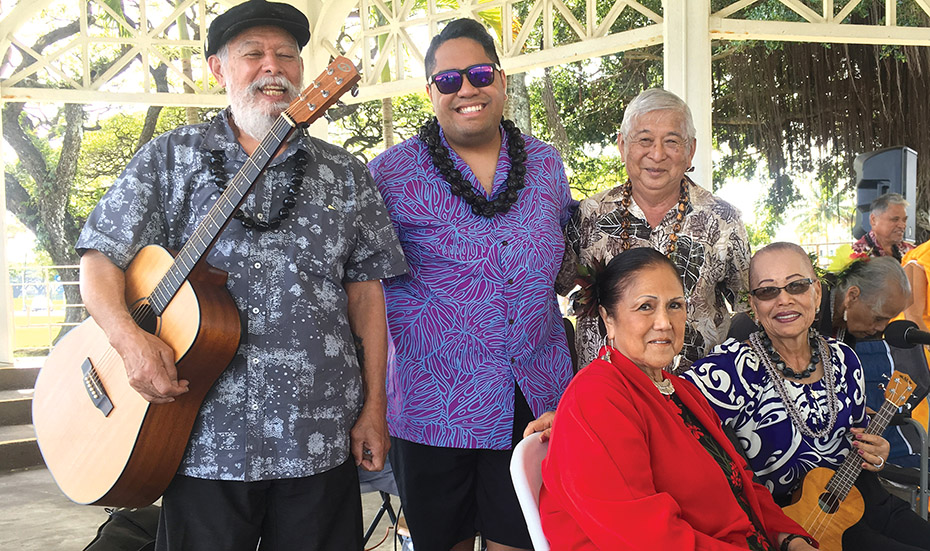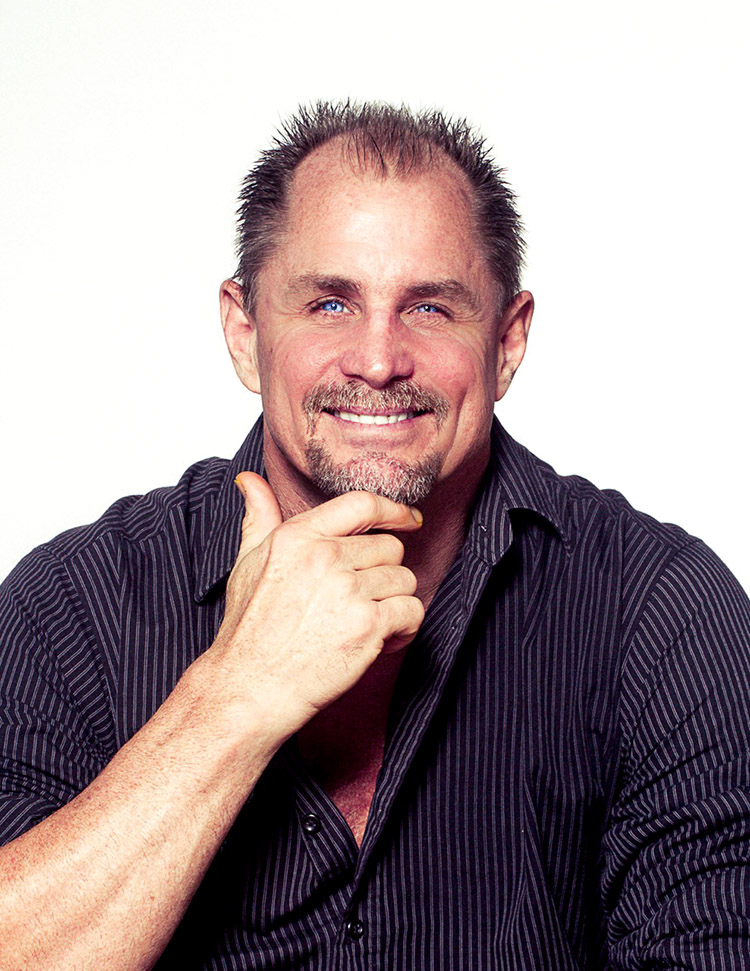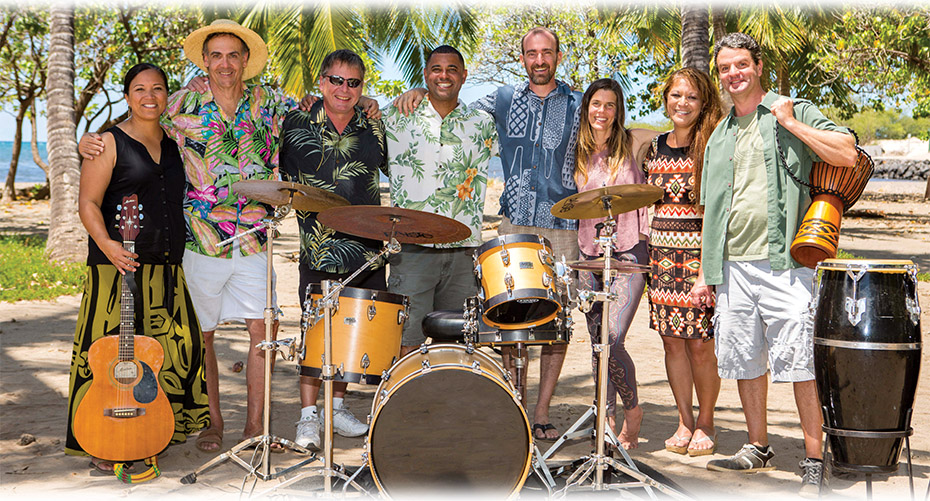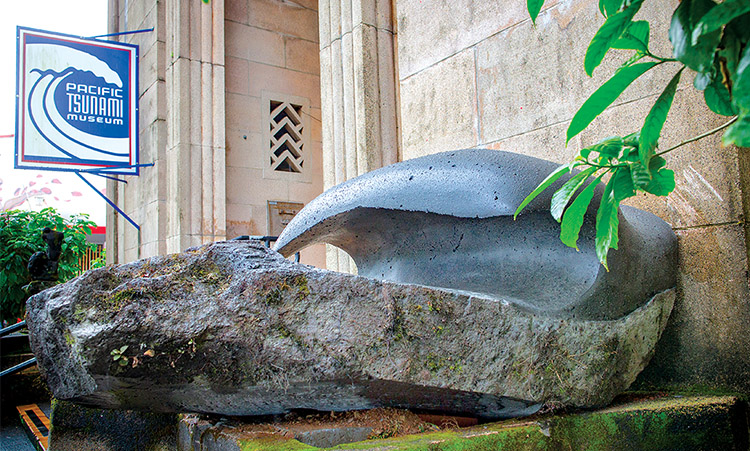
William McKnight: Ambivalent Artist, Passionate Sculptor
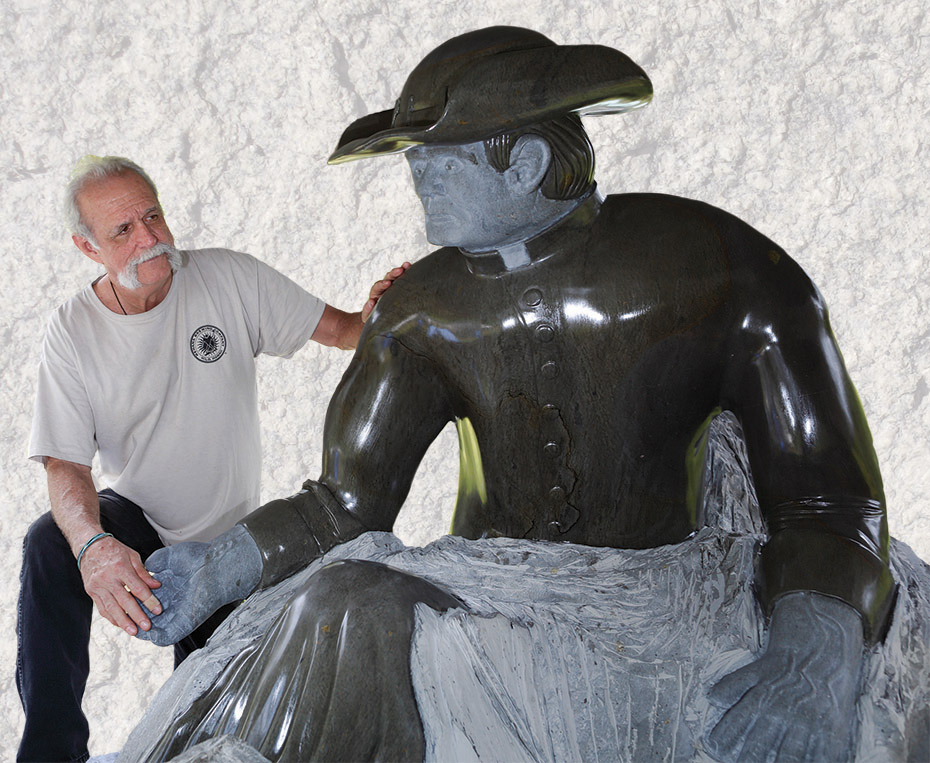
By Paula Thomas
William McKnight has cultivated a deep relationship with stone. From the lengths he may go to get a rock from the ocean, a quarry, or on a hillside, to the passion that engulfs him when his creative energy is in the driver’s seat, he gets “in the zone,” attentive to his vision, his tools, and what the stone is telling him. According to William, his work is a two-way exchange between man and rock.
The Learning is in the Doing
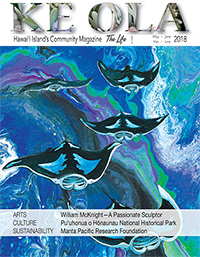
“I never wanted to be an artist,” says William. He did not have a drive to do art until he was an adult. “I did know that I wasn’t a great student,” he explains. “I don’t read. I am dyslexic. Never did well with things academic.” As a kid, he made puppets and designed clothing. Anything in 3D. After finishing high school in 1971, William obtained an associate’s degree in design engineering from State University of New York at Purchase. “Never cracked a book there,” he quipped. Three years later, after a stint at a nuclear power plant followed by training as a European chef in New York City, he still lacked direction. His mother got him into Sarah Lawrence College where she worked, and he eventually earned a Bachelor of Fine Arts in 1981.
William spent the first year at Sarah Lawrence at its La Costa campus in southern France. “I was bad, so my mother sent me to the south of France,” he notes wryly.
That experience changed his life—more because of whom he met than what he learned. He kept company with luminously talented photographers, sculptors, gallery owners, and was taught by Japanese/American master printmaker, Ansi Ucima, who loved William’s work.

William carved stone in a quarry with fellow students and, without a clue of what to do, on impulse he sculpted a kanji in stone as his first piece. No one could fathom it was the tall (6’5”) kid from America who had made the kanji. The Italian master stone sculptor told his students in the quarry, “Just wait. You will fall in love with stone, with your soul and your heart.” William balked at the notion at the time, however it proved to be a prescient statement.
Julian Levy, a New York City gallery owner and an art dealer, was William’s art history professor. Julian became a seminal influence on William. The two spent a lot of time together, visiting Julian’s artist friends and meeting in cafés with people like French photographer Henri Cartier-Bresson, Jon Pier Miele, and American photographer David Douglas Dunkin. Yasuo Mizui became another good friend of Williamʻs. They felt as though they had always known each other, and William let himself be a sponge. “It was like getting life coaching and I wasn’t yet 22,” William says.
He learned techniques for clay, stone, and wood, gained perspective, and began to hone his sensibilities. “Mizui taught me to work on everything at the same time to get the proportions figured out,” he shares. “Yeah, sure, it’s about six heads for the body, but you work on the whole thing at once—front, back, all the time,” he says. “I don’t sketch stuff out; I just carve.”
Following his year of transformation, William returned to Sarah Lawrence’s New York campus, happy for the experience, insecure about his work, overwhelmed by all the history of art and artists that he didn’t know, and surprised by people’s reaction to his work. “It took years for me to feel that I was good,” he admitted.

Listen and You Will Hear
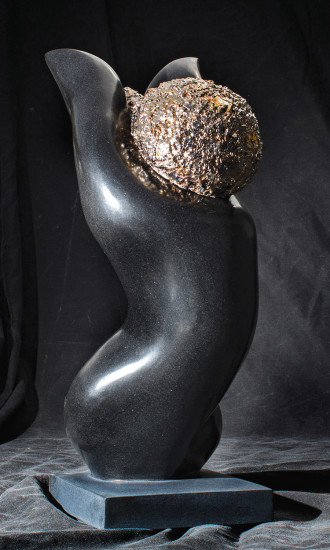
The budding artist could be called a stone whisperer for the way he feels about what the rock wants to become. The listening starts at the very beginning, in the selection of the rock. As spiritual teachers will tell you, if you want to remove something from its place, it has to want to go. So if a big rock doesn’t budge, William knows it is not the right rock. “You ask the rock if it’s willing. Permission is the key to collaboration. Asking permission establishes that connection right from the get-go,” says William, “so the relationship is founded on respect and reciprocity.”
The stone tells him what it wants him to do and he listens. What happens if he doesn’t listen? “The project doesn’t work out,” he says. “The stone will crack, or crumble, my tools break, it will just be a mess.” As he was carving a commissioned statue of Father Damien, William’s grinder caught on fire, and blew up because the stone was so hard. He had another grinder on hand and it caught on fire too. Rather than give up, he changed tactics. Cutting in a different direction, a vein of olivine in the shape of a heart appeared in the patron saint’s cheek and one in the shape of Hawai‘i Island in his hair. “These are the little gifts you get when you listen,” William affirms. In the end, he went through seven grinders.
It is the hard basalt from Hawai‘i that William loves to work with even though he carves granite, coral, bismuth, and works with concrete. With the basalt he can play with the surface, leaving some areas rough and others highly polished. The contrast is a central element in his abstract pieces.
His deep sensibility cuts beyond convention, patterns, and practices. He tunes into the heart of things, drilling down to the feeling he seeks to evoke. When he carves, he is capturing a moment in time: a sad woman with child, a priest in a warm-hearted gesture. His abstract work, on the other hand, is all about evocation and texture. William believes that art should make you feel something.
Make Things Work Out
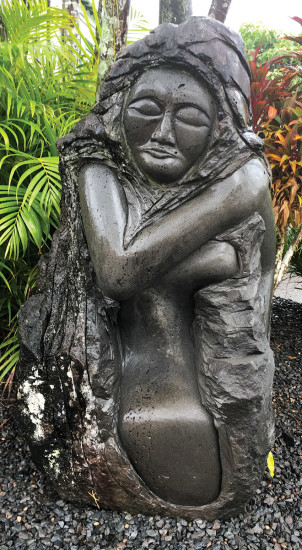
As a personality, William feels easy-going, undemanding, and unpretentious about himself even as he is confident. His strong moral compass and deep beliefs come through in his stories about friends, patrons, and making art. He enjoys people who live their word as he tries to live his. “It’s about doing what you say you’re going to do,” he says. So when he engages with a patron, it’s more a verbal exchange with the proverbial handshake than a contract, paperwork and signatures. “I like dealing with people who stand by their word.”
Pressure also motivates him. When William is scheduled to do a show, he is likely to wait until the eleventh hour to get started because the race against time gets his adrenaline going. He can finish a piece in a few hours, a day, or 15 years. It depends.
Sometimes, things do go awry—not just with the stones, but with patrons too. This happened with the commission of the Father Damien statue. William received a down payment and started working. The agreement for the statue went bad a little more than a year into the project, which took three more years to complete.
The fall-out did not faze William. He did, however, experience some mild stroke activity as he was carving the massive piece, and that affected his dexterity. On a whim, he appealed to the statue for healing help and he feels the rock responded. The 7-foot, 5-ton statue is in his backyard, waiting for its new home.
A Passion for Creativity
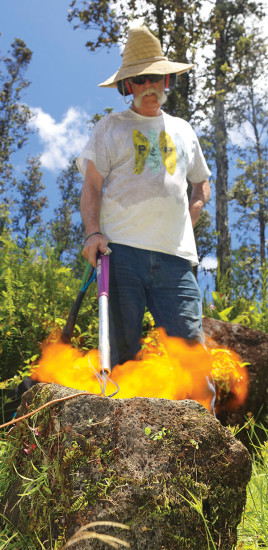
About the craziest thing William admits to is walking along the edge of cliffs. He is not a daredevil and not one for stunts that don’t involve his sculptures, his boulders, or big trucks. He mentions that people think he is crazy. They hear his stories about blood dripping from his stone block (because he unknowingly cut himself), and instead of stopping and patching himself up, he just blots up, applies any disinfectant (alcohol, tea tree oil, or bleach), and slaps on some duct tape or super glue so he can keep going. ‘Crazy’ is a word people use to describe him, however he doesn’t own it.
William relishes the sculpting because there is always a struggle. “Inner conflict always happens when you’re working on a piece. You want to go one way, the stone tells you something else, your idea and vision is asked to embrace a new direction. That internal struggle—you gotta get into that battle. You do the best for your art, for you … if you aren’t looking inside and questioning, you can fall into the trap that you think you know everything,” he explains. “You start to think you’re the artist and it’s all about you.”
“My art is not about me,” William insists. He doesn’t often sign or title his pieces, nor does he track patrons, chart sales, or feature awards and exhibits.
The fact that William never wanted to be an artist, and never aspired to be an artist, helps him separate who he is from how other people see him. He is a preternaturally talented artist in love with stones, a man descended from a line of blacksmiths, Irish knights, and the Senecas on his father’s side. Not one to wait for a commission before he works on a project, he has several projects going at any one time and isn’t about to stop any time soon.
“Sculpting,” he declares, “is what I do.” ❖
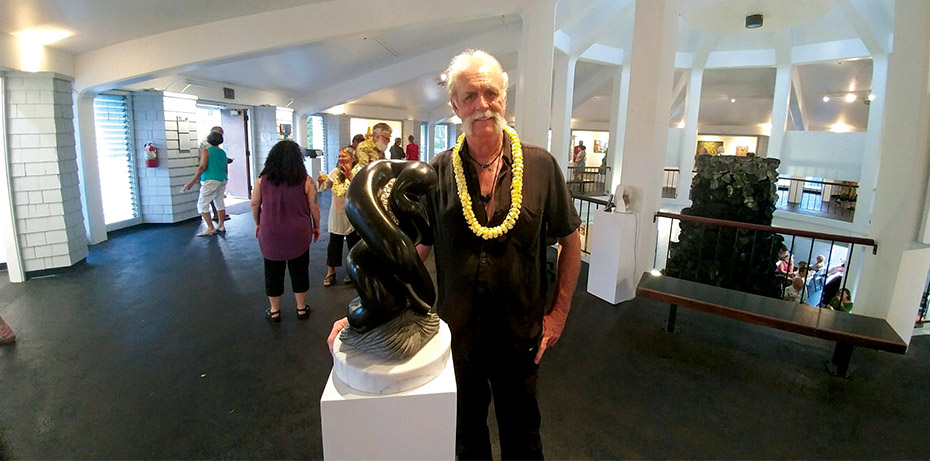
For more information: eyecarve@yahoo.com
To See William’s Abstract Sculptures in East Hawai‘i:
Tsunami Wave is outside the Pacific Tsunami Museum. Life Taken Away, an abstract of a woman lamenting the loss of her children, is near the north corner in front of the Pacific Tsunami Museum. Another of William’s abstract sculptures is near the corner of Haili and Kamehameha Ave. His collaborative work with Elizabeth Miller, basalt and aluminum, is in front of the East Hawai‘i Cultural Center.
Mahalo BMW of Hawaii – Art Story Sponsor
